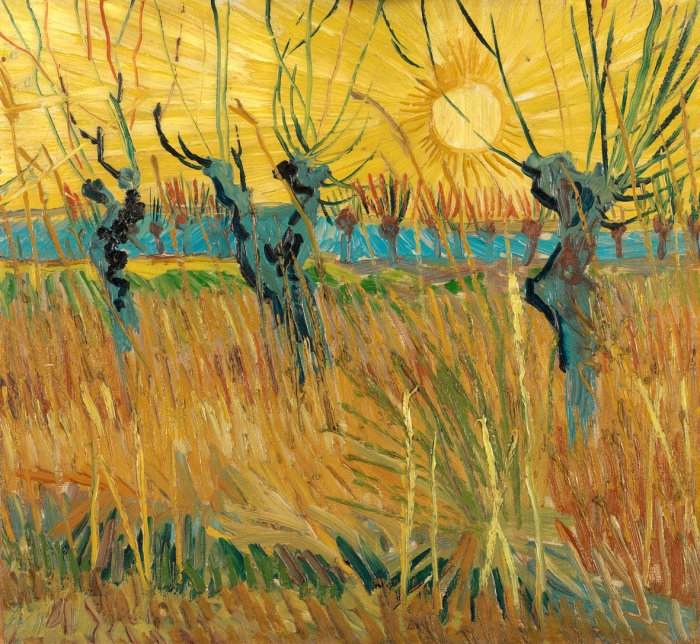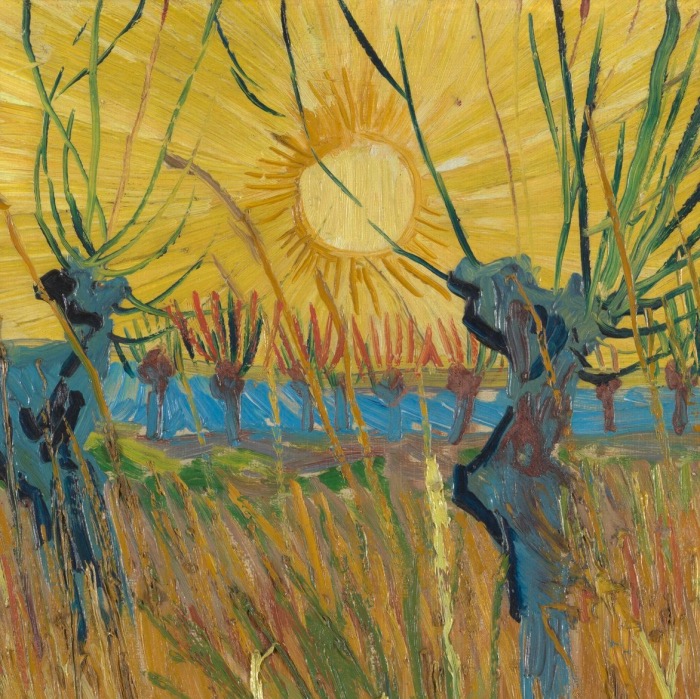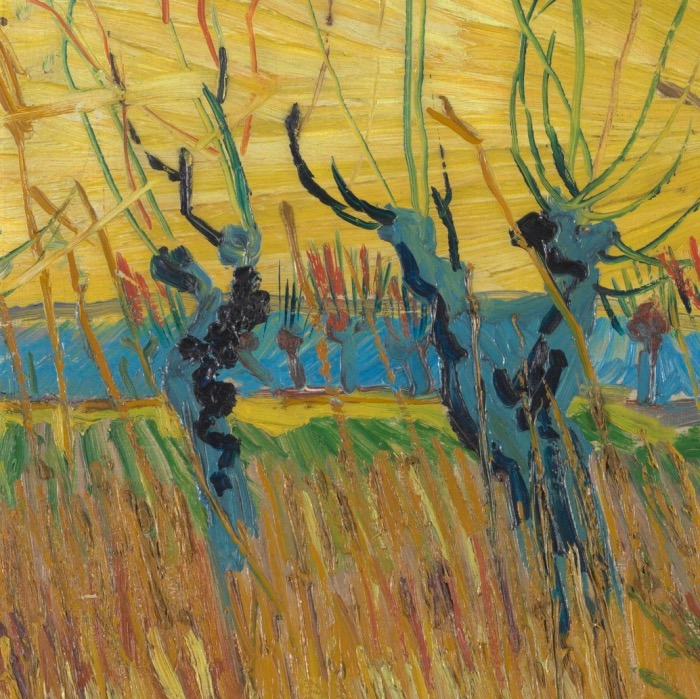Pollard Willows at Sunset by van Gogh: description and curious facts

Vincent van Gogh, Pollard Willows at Sunset, 1888
POLLARD WILLOWS AT SUNSET BY VAN GOGH: DESCRIPTION AND CURIOUS FACTS
When I look at Pollard Willows at Sunset by van Gogh there’s a words that immediately comes to my mind: emotion.
If I look at brushstrokes and lines drawn by van Gogh with colour I feel his emotion while admiring this Provençal landscape. I can feel van Gogh’s urgent need to paint and put that explosion of vitality that he felt at that moment on canvas.
In this post I’ll make you discover one of the most intense paintings by van Gogh.
Pollard Willows at Sunset by van Gogh

Vincent van Gogh is one of the world’s most famous artists.
His painting is one of a kind and even those who haven’t a specific artistic education can understand it.
His troubled life and suicide made him a symbol of existential unease and the contemporary man can’t help but perceive as actual the messages in van Gogh’s works.
DESCRIPTION OF POLLARD WILLOWS AT SUNSET BY VAN GOGH
The painting Pollard Willows at Sunset by van Gogh was executed in 1888 in Provence. The work is part of the collection of the Kröller-Müller Museum works in Otterlo, and is of great impact.
The artist portrayed a typical autumn landscape of Provence.
The sun is a disk from which stripes of colour originate, that seems to generate a vital energy spreading everywhere.
Only a light-blue stripe divides the sky from the earth, while willows are defined by few lines.
The point of view is low and the eye of the observer is at the same height as the dry grass waiting to be cut.
The whole painting is crossed by lines: those that define the long grass but also the lines that allows you to identify the willows, and in the background the lines of the sun’s rays cross the sky.
CURIOUS FACTS ABOUT POLLARD WILLOWS AT SUNSET BY VAN GOGH
The painting Pollard Willows at Sunset by van Gogh is one of the works that belongs to a happy time of the artist’s life.
Van Gogh was highly creative in autumn 1888, and in the letters he sent his brother Theo, he wrote that he was painting tirelessly.
In the letters belonging to same period, in addition, van Gogh affirms that he no longer made a charcoal sketch for the paintings. His painting technique and his style had undergone a change and he painted directly on canvas.
“That’s no use, you must attack drawing with the colour itself in order to draw well” (letter 539 to Theo, September 1888).
Follow me on:
About me
In this blog, I don't explain the history of art — I tell the stories that art itself tells.



